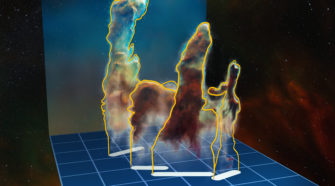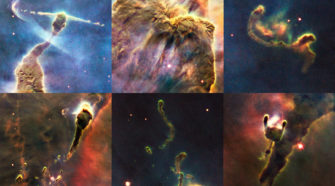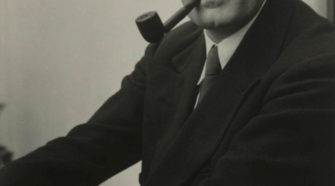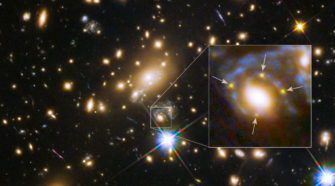Suiting up for 50 years of spacewalks
For many millenia, all of humanity had been bound to this terrestrial planet we call Earth, but in 1965 our species took its first steps into the unknown of outer space. Russian Alexey Leonov became the first to conduct a spacewalk in March 1965 , followed several months later by American astronaut Edward White in June 1965. From those first early …
A new look in 3D at the Pillars of Creation
New study suggests that iconic structures more aptly named the Pillars of Destruction The original Hubble Space Telescope image of the famous Pillars of Creation was taken two decades ago and immediately became one of its most famous and evocative pictures. Since then, these billowing clouds, which extend over a few light-years, have awed scientists and the public …
Hubble’s greatest discoveries
During its 25 year long mission the Hubble Space Telescope has changed our view of the Universe significantly. Some of the most ground-breaking discoveries made in astronomy in the 20th century were made by Hubble, which allows astronomers to better understand the world we live in and investigate its mysteries even further. The Hubble Deep …
Edwin P. Hubble: The man behind the name
When talking about the Hubble Space Telescope one man is often forgotten: That man who gave the space telescope its name: Edwin Powell Hubble. Today, most astronomers see him as the most important observational cosmologist in the 20th century and he played a crucial role in establishing the field of extragalactic astronomy. As a result …
Making house calls to Hubble
Servicing Mission 1 STS-61 Endeavour • December 2-13, 1993 Servicing Mission 1, launched in December 1993, was the first opportunity to conduct planned maintenance on the telescope. In addition, new instruments were installed and the optics of the flaw in Hubble’s primary mirror was corrected. After Hubble’s deployment in 1990, scientist realized that the telescope’s …
An explosive quartet: Supernova ‘multiplied’ by galaxy
Whilst looking closely at a massive elliptical galaxy and its associated galaxy cluster MACS J1149+2223 — whose light took over 5 billion years to reach us — astronomers have spotted a strange and rare sight. The huge mass of the galaxy and the cluster is bending the light from a much more distant supernova behind …






